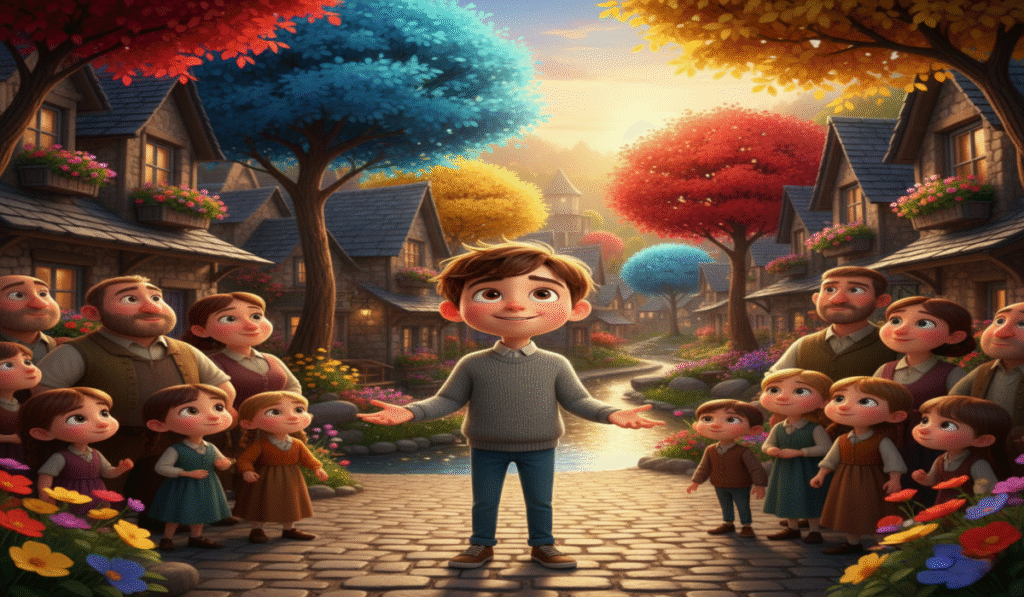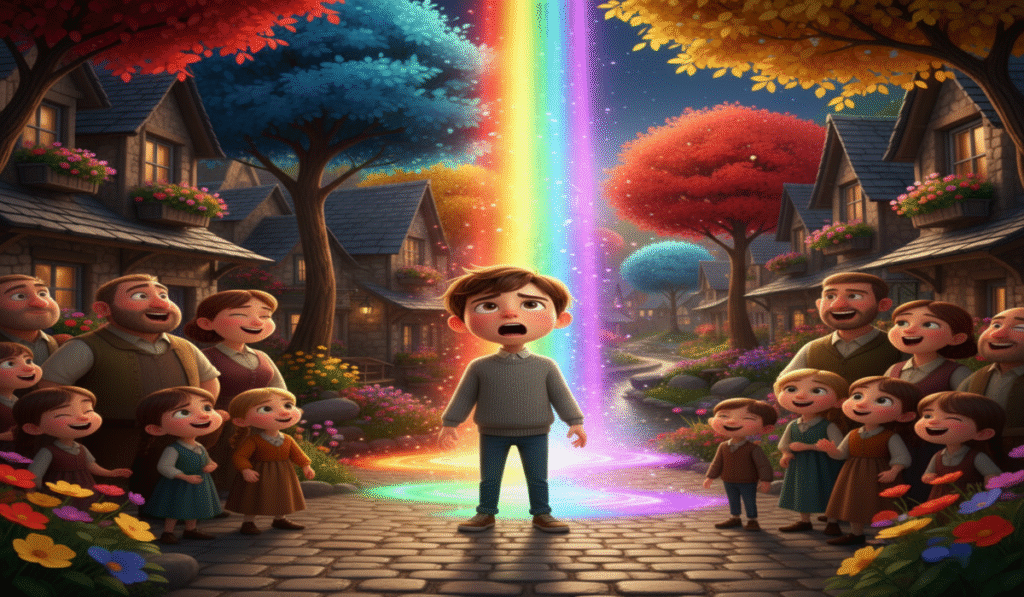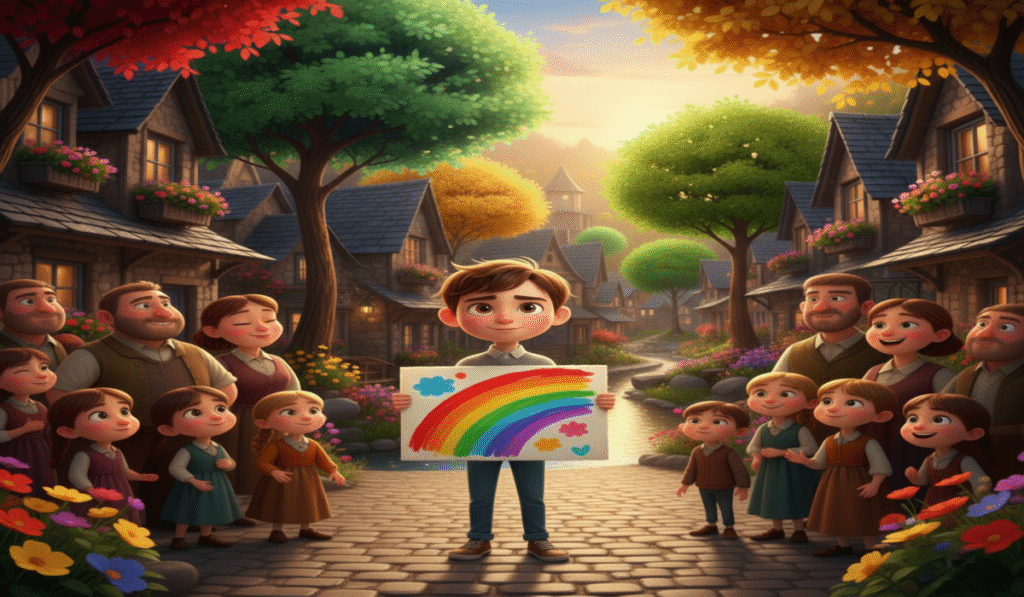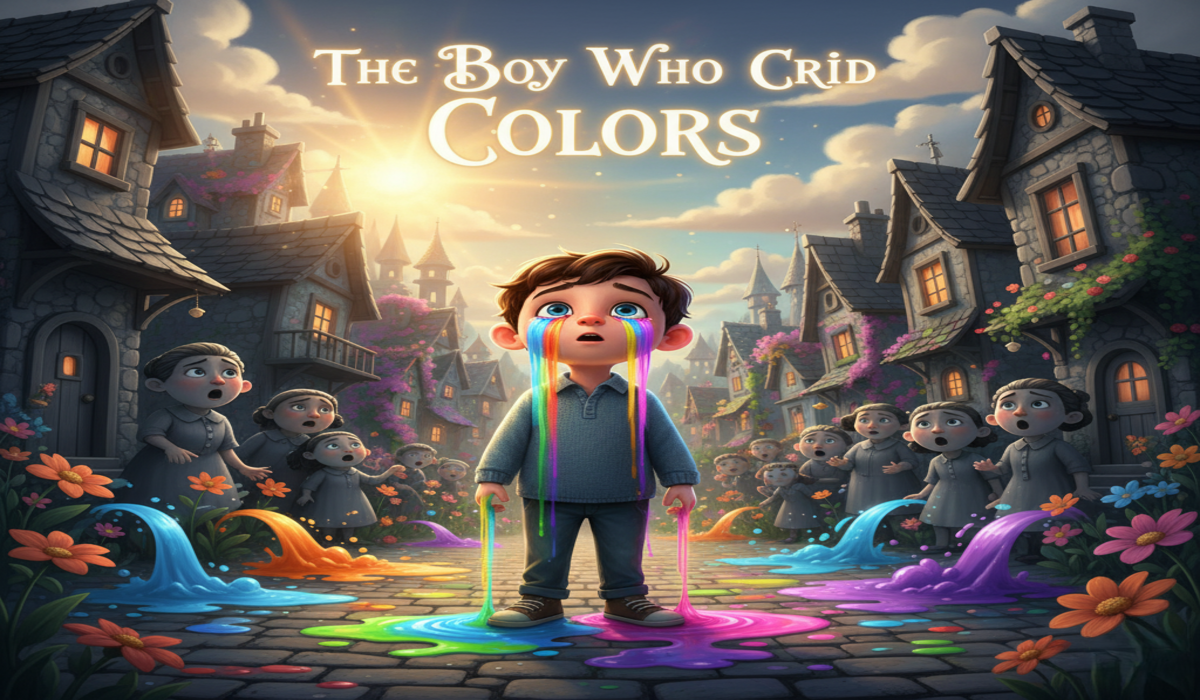Discover the magical story of The Boy Who Cried Colors—a heartwarming tale that teaches honesty, trust, and the beauty of truth through a boy’s colorful lies.
Table of Contents
Introduction: A Tale of Colors and Honesty
Stories frequently assist kids apprehend life training in a simple manner. One such specific story is The Boy Who Cried Colors. Unlike the traditional tale of the boy who cried wolf, this tale uses colorations, creativeness, and magical experiences to train the importance of honesty and agree with. Through this story, children study that lies, despite the fact that colorful and amusing, can sooner or later damage relationships and make others stop believing in you.
The Beginning of The Boy Who Cried Colors

Once upon a time, in a small joyful village, there lived a boy named Arin. He cherished shades extra than something. His drawings were always filled with brilliant reds, deep blues, glowing greens, and vivid yellows. But Arin additionally had a dependancy—he loved making up stories that weren’t genuine.
One day, he told his buddies, “I noticed the river flip golden ultimate night time!” Everyone rushed to peer, however the river changed into just the equal. Another time, he claimed, “The trees turned pink!” But again, not anything had modified. Slowly, humans started out calling him “The Boy Who Cried Colors.”
Why He Cried Colors
Arin didn’t deceive hurt everyone. He really desired hobby. He idea if he said some thing magical about sun shades, everyone might listen to him. For some time, his pals believed him. They could gather round excitedly whenever he shouted about a today’s colourful miracle. But once they discovered not anything authentic, they felt disappointed.
The story of The Boy Who Cried Colors reminds us that lies, irrespective of how quite they sound, can result in mistrust.
The Day Something Magical Happened

One night, something unusual clearly occurred. A rainbow spread throughout the sky, however it wasn’t an normal rainbow—it become brighter, glowing, and regarded to the touch the ground. Arin bumped into the village shouting, “Come brief! The rainbow has fallen to the earth!”
But the villagers laughed. “It’s just The Boy Who Cried Colors once more. Don’t agree with him.”
Arin begged them to come, however no one listened. For the first time, his colourful tale become real, yet no one relied on him. He felt sad and lonely.
Learning the Hard Way
Arin realized that his lies had taken away something precious—people’s trust. He had cried colors so many times that now, when the truth appeared, nobody wanted to listen. That night, sitting under the glowing rainbow all by himself, he whispered, “I wish I had been honest from the beginning.”
This part of The Boy Who Cried Colors teaches children the value of honesty. Trust, once broken, is very hard to rebuild.
How Arin Changed
The subsequent day, Arin promised himself by no means to lie again. He went to his pals and admitted, “I best made up those colourful memories. I desired attention. But the previous day’s rainbow was real.”

At first, they didn’t accept as true with him. But slowly, as days handed, they saw that Arin no longer lied. He handiest spoke the fact. Whenever he saw a stunning sunset or painted a image, he shared it actually. Gradually, his friends began trusting him once more.
The lesson from The Boy Who Cried Colors is straightforward: honesty builds lasting friendships, while lies—even colorful ones—can spoil them.
The Moral of The Boy Who Cried Colors
Every child should learn that:
- Lies may bring short-term attention but long-term harm.
- Honesty helps build stronger bonds.
- Trust is precious—once lost, it takes effort to earn back.
Through the colorful story of Arin, children understand that truth is more beautiful than any lie.
Why This Story Matters for Kids
Children love fantasy, colorations, and creativeness. That is why The Boy Who Cried Colors is a great ethical story. It uses some thing kids love—brilliant colours—to teach an crucial lesson about honesty. Parents and instructors can share this story to give an explanation for how lying might look a laugh however can lead to loneliness and remorse.
Conclusion: The True Beauty of Colors
In the cease, Arin observed that the maximum magical color inside the world become reality. Unlike his made-up colourful lies, truth shone brighter, bringing happiness and friendship.
The Boy Who Cried Colors teaches us that regardless of how tempting it is to lie for interest, the beauty of honesty usually wins.
FAQs about The Boy Who Cried Colors
Q1: What is the main moral of The Boy Who Cried Colors?
The moral is that honesty is always better than lies. Even colorful lies can break trust, while truth builds stronger bonds.
Q2: How is The Boy Who Cried Colors different from “The Boy Who Cried Wolf”?
While the wolf story teaches the danger of lying through fear, The Boy Who Cried Colors teaches the lesson using imagination, beauty, and trust.
Q3: Why did people stop believing Arin in The Boy Who Cried Colors?
Because he lied many times about magical colors. When something real happened, nobody trusted him.
Q4: Can this story be used for teaching kids?
Yes, The Boy Who Cried Colors is perfect for children as it mixes imagination with a clear moral about honesty.
Q5: What lesson should parents highlight when telling this story?
Parents should emphasize that lies might seem fun at first, but truth is always the best path.

